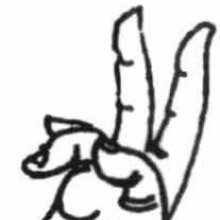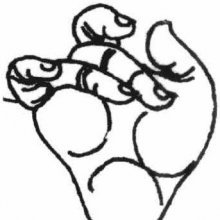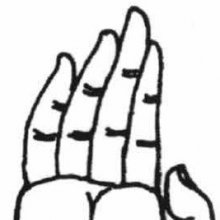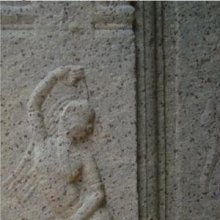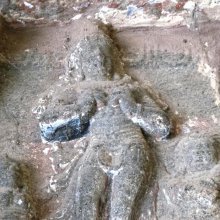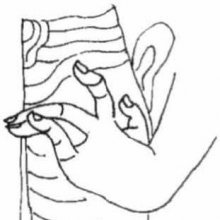Finger: 1 definition
Introduction:
Finger means something in Hinduism, Sanskrit. If you want to know the exact meaning, history, etymology or English translation of this term then check out the descriptions on this page. Add your comment or reference to a book if you want to contribute to this summary article.
Images (photo gallery)
(+35 more images available)
In Hinduism
Yoga (school of philosophy)
Source: ORA: Amanaska (king of all yogas): A Critical Edition and Annotated Translation by Jason BirchThe Fingers are denoted by the Sanskrit term Aṅgulī, according to the Mataṅgapārameśvaratantra (Mataṅgapārameśvara’s Yogapāda) verse 2.23-27.—In later Tantras, various details [such as fixing the eyes on some object] often preceded the verses on the seated postures, thereby indicating that the position of the hands, torso and gaze was ancillary to all of the prescribed postures. In the Mataṅgapārameśvara, these postural ancillaries [making use of the fingers] constitute what they call a karaṇa, and when it is combined with a seated pose, the Yogin’s posture becomes just as complicated as any seated pose described in later medieval yoga texts.

Yoga is originally considered a branch of Hindu philosophy (astika), but both ancient and modern Yoga combine the physical, mental and spiritual. Yoga teaches various physical techniques also known as āsanas (postures), used for various purposes (eg., meditation, contemplation, relaxation).
See also (Relevant definitions)
Starts with: Finger cherry, Finger comb grass, Finger euphorbia, Finger grass, Finger millet, Finger root, Finger rot, Finger tree, Finger-leaved adenia, Finger-weed.
Query error!
Full-text (+2515): Anguli, Angula, Mudra, Anguliyaka, Mucuti, Vitasti, Anamika, Kora, Sphotana, Nakha, Angulisandesha, Pharpharika, Pucchati, Angulimotana, Tarjani, Hastagra, Panicapalya, Pratala, Galitakushtha, Karabha.
Relevant text
Search found 402 books and stories containing Finger, Fingers, The fingers; (plurals include: Fingers, Fingerses, The fingerses). You can also click to the full overview containing English textual excerpts. Below are direct links for the most relevant articles:
Manusmriti with the Commentary of Medhatithi (by Ganganatha Jha)
Verse 2.59 < [Section XIII - Initiation (upanayana)]
Verse 2.58 < [Section XIII - Initiation (upanayana)]
Verse 8.368 < [Section XLVI - Adultery]
Hastalaksanadipika a critical edition and study (by E. K. Sudha)
5. Comparison of Vedic mudras with Kutiyattam and Kathakali < [Chapter 6 - Background of evolution of language of gestures]
Chapter 8 - English Translation of the Hastalaksanadipika (Hasta-Lakshana-Deepika)
4. Mudras of the Namputiri Samaveda < [Chapter 6 - Background of evolution of language of gestures]
Soundarya Lahari of Shri Shankara (Study) (by Seetha N.)
The Shakta concept of Mudra (position of the fingers) < [Chapter 5 - Shakta-Tantras—Saundaryalahari as an epitome of Shaktism]
The concept of Garuda-prayoga < [Chapter 7 - Philosophical aspects in Saundaryalahari]
The Sixty-four Tantras and Sixty-four Arts < [Chapter 7 - Philosophical aspects in Saundaryalahari]
Guhyagarbha Tantra (with Commentary) (by Gyurme Dorje)
Text 8.4 (Commentary) < [Chapter 8 (text and commentary)]
Text 8.3 (Commentary) < [Chapter 8 (text and commentary)]
Text 8.11-12 (Commentary) < [Chapter 8 (text and commentary)]
Natyashastra (English) (by Bharata-muni)
Chapter IX - Gestures of Major Limbs (aṅga)
Chapter XXXIII - On Covered Instruments (avanaddha)
Parama Samhita (English translation) (by Krishnaswami Aiyangar)
Related products
(+43 more products available)
